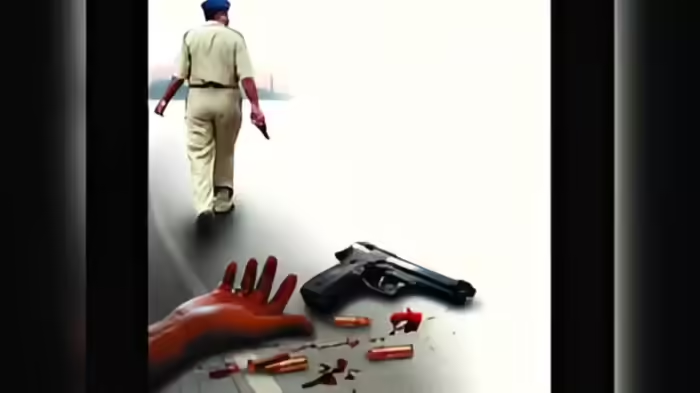
New Delhi: Encounter killings by Delhi Police have long remained a topic of debate — a thin line between the necessity of maintaining law and order and the question of human rights. While one section of society believes encounters are essential to curb the growing crime menace, another calls them extrajudicial acts that demand accountability and transparency.
From Self-Defense to Controversy: The Complex History
The first major controversy dates back to March 31, 1997, when Delhi’s Connaught Place witnessed a broad-daylight shootout that left two Haryana businessmen, Pradeep Goyal and Jagjit Singh, dead. The Crime Branch claimed it was an act of self-defense after shots were fired from the car. Within 24 hours, the then Police Commissioner was removed, and 10 officers, including an ACP and an Inspector, were sentenced to life imprisonment — a case that reshaped the public perception of “encounters.”
Yet, there have been encounters where police officers sacrificed their lives. One such incident was the Batla House encounter on September 19, 2008, where Inspector Mohan Chand Sharma of the Special Cell was martyred in a face-off with terrorists. Despite controversies, all investigations later gave the police a clean chit, and Sharma was posthumously awarded the Ashok Chakra, India’s highest peacetime gallantry award.
The Term ‘Encounter’ and Its Legal Ambiguity
Interestingly, the word encounter doesn’t exist in the Constitution or in any legal framework. It simply evolved to describe armed confrontations between police forces and criminals or terrorists — a phenomenon that gained ground during the Mumbai underworld era of the 1990s and 2000s, when over 600 encounters were recorded.
According to a 2022 statement in Parliament, between January 2017 and January 2022, India recorded 655 encounter killings, with the highest numbers in Chhattisgarh (191) and Uttar Pradesh (117). Delhi reported 8 during that period. From May 2024 to October 2025, Delhi alone saw 9 encounters, eliminating 15 hardened criminals.
When the Gun Becomes the Last Resort
Former IPS officer Karnail Singh, ex-Director of Enforcement Directorate, explains:
“Police can open fire only in extreme situations — when an armed criminal tries to flee custody or attacks officers. Encounters usually happen in self-defense, not as pre-planned executions.”
He adds that in today’s scenario, many criminals run organized gangs involved in extortion, land grabbing, and contract killings. Arresting them often triggers violent retaliation, forcing police to respond with firepower.
Famous and Controversial Encounters
- Asad Ahmad (2023, Jhansi): Son of gangster-politician Atiq Ahmad, Asad was killed along with his aide Ghulam. Both carried ₹5 lakh bounties.
- Ishrat Jahan Case (2004): Initially claimed to be a Lashkar-e-Taiba operative, her killing was later labeled “fake” by CBI, but the court acquitted all police officers.
- Vikas Dubey Encounter (2020): The Kanpur gangster was shot dead while allegedly trying to escape after the police vehicle overturned.
- Hyderabad Case (2019): Four accused in the rape and murder of a veterinary doctor were shot dead when they allegedly snatched police weapons. The case later raised serious questions about “instant justice.”
- Sohrabuddin Sheikh Case (2005): The gangster and his wife were killed in a Gujarat police encounter; all 22 accused officers were acquitted in 2018.
The Encounter Specialists
- Pradeep Sharma (Mumbai Police): Credited with 104 encounters, once hailed as a “super cop,” later convicted in a fake encounter case.
- Daya Nayak (Mumbai Police): The inspiration behind the movie Ab Tak Chhappan, with 80 encounters to his name.
- Praful Bhosale (Mumbai Police): Known for taking down gangsters linked to Dawood’s network; recorded 84 encounters.
- Rajbir Singh (Delhi Police): Known as a fearless officer with 50 encounters, later killed by a property dealer.
A Balancing Act Between Law and Justice
Encounters reflect a grim reality — when the system’s legal pace struggles to match the speed of crime, the gun often takes over. While human rights commissions continue to question accountability, law enforcement agencies insist they act only in defense and necessity.
As the debate rages on, one truth stands out: every bullet fired in an encounter is not just a shot at a criminal, but a test of India’s commitment to justice, law, and human rights.
Discover more from SD NEWS agency
Subscribe to get the latest posts sent to your email.